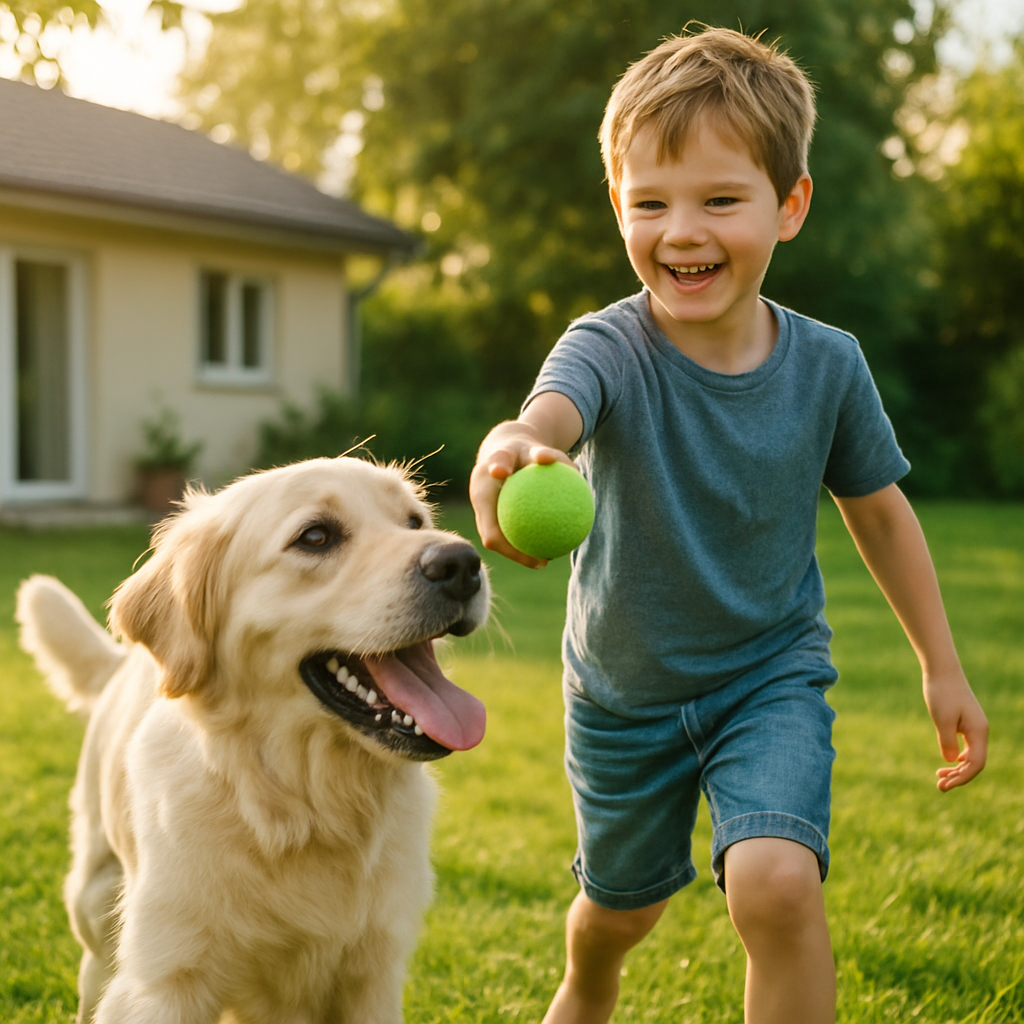How to Prevent Losing Your Dog at Home with or Without a Yard?
By Lost'Him Team • February 21, 2025

Many dog owners believe that having a yard is enough for their dog’s happiness and that they don’t need regular walks. However, living between the house and the yard without ever going out is comparable to living in an apartment. Even a large yard will never replace walks, explorations, and social interactions essential for a dog's well-being.
A dog that lacks enough mental and physical stimulation will often try to escape to satisfy its instincts. Here’s how to keep them safe while respecting their fundamental needs to prevent them from trying to run away.
1. Why is a yard not enough?
👉 Exploring new places
- Dogs are curious animals that need to discover new environments.
- A yard they know by heart no longer stimulates their brain, leading to boredom and frustration.
💡 A mentally and physically tired dog will be less likely to want to escape.
👉 Smelling new scents
- Dogs analyze their environment with their nose.
- On walks, they discover new scents from other dogs, animals, and plants that enrich their world and stimulate their minds.
💡 A dog that cannot explore new scents lacks mental stimulation.
👉 Meeting and interacting with other dogs
- Dogs are social animals that need to interact with their kind.
- A dog that never meets other dogs may become reactive or fearful around them.
💡 Social isolation can lead to behavioral problems.
👉 Walking and running on different surfaces
- A yard often has only one type of surface. Dogs need to experience different textures (grass, gravel, concrete, dirt) to improve their mobility.
💡 A dog used to different surfaces is more confident outdoors.
👉 Burning energy in a proper way
- Even a large yard doesn’t encourage a dog to run and play actively.
💡 A dog left alone in a yard won’t run to exercise—they will wait and may try to escape for a more exciting activity.
2. Securing the Yard to Prevent Escapes
👉 Proper Fencing
- A fence at least 1.8m (6ft) high for jumping dogs.
- Buried fencing at least 30cm (12 inches) deep to prevent digging escapes.
- Regularly check for gaps or weak spots in the fence.
👉 Monitoring Doors and Gates
- Install automatic spring closures on gates.
- Ensure entry doors are properly closed when the dog is nearby.
💡 An improperly closed gate is often the main cause of escapes!
👉 Reducing Boredom to Prevent Escape Attempts
- Do not leave your dog outside for too long without activities.
- Provide engaging toys: stuffed Kong, snuffle mats, tracking games.
- Train recall so they return even when distracted.
💡 A bored dog in the yard will try to escape to find something fun to do.
3. Spaying and Neutering: A Key Factor in Preventing Escapes
👉 Why Does Neutering Reduce Escapes?
- Unneutered males are attracted to females in heat and may travel miles to find them.
- Females may try to wander off during their heat cycle.
- Neutering reduces reproductive instincts, territorial behaviors, and certain aggressions.
💡 A neutered dog is calmer, more stable, and less likely to escape in search of a mate.
4. The Relationship with the Owner: A Key to Safety
👉 Building a Stable and Reassuring Relationship
- Avoid unnecessary punishments that can stress your dog.
- Use positive reinforcement (rewards, encouragements).
- Teach your dog that coming back to you is always a good thing.
💡 A dog that trusts its owner will look for them when scared rather than running away.
Conclusion: A Happy Dog Has No Reason to Escape
- ✅ Provide daily varied outings (exploration, meeting other dogs, mental stimulation).
- ✅ Secure the environment (proper fencing, safe gates, supervision).
- ✅ Train recall so they return even in frightening situations.
- ✅ Spay or neuter to prevent hormone-driven escapes.
- ✅ Build a stable and reassuring relationship to prevent anxiety and fleeing behavior.
- ✅ Use a GPS collar if your dog tends to escape.
💡 A well-stimulated, well-trained, and well-supervised dog has no reason to run away. 🐶💙
 EN
EN  FR
FR